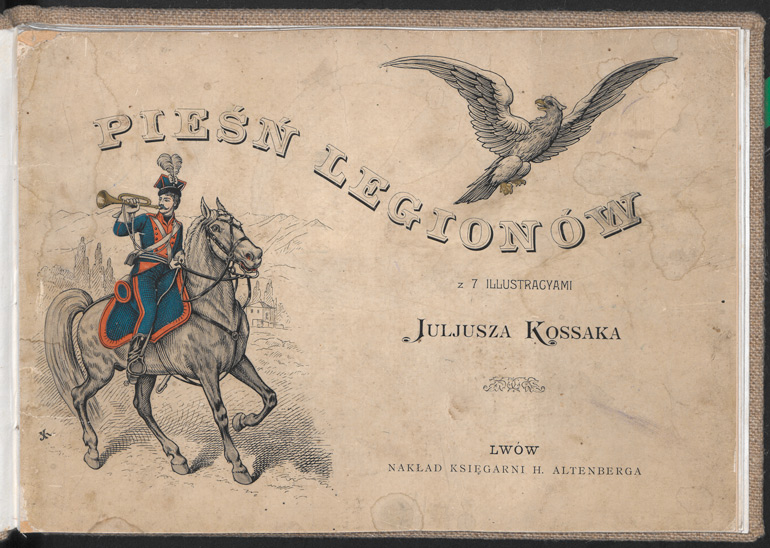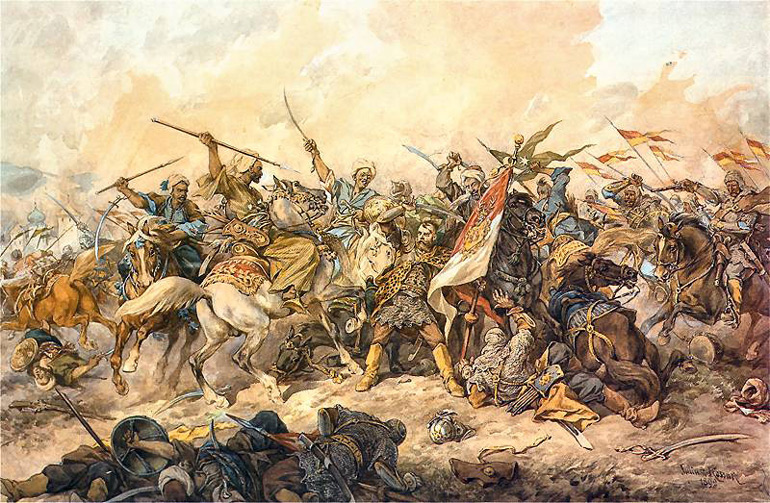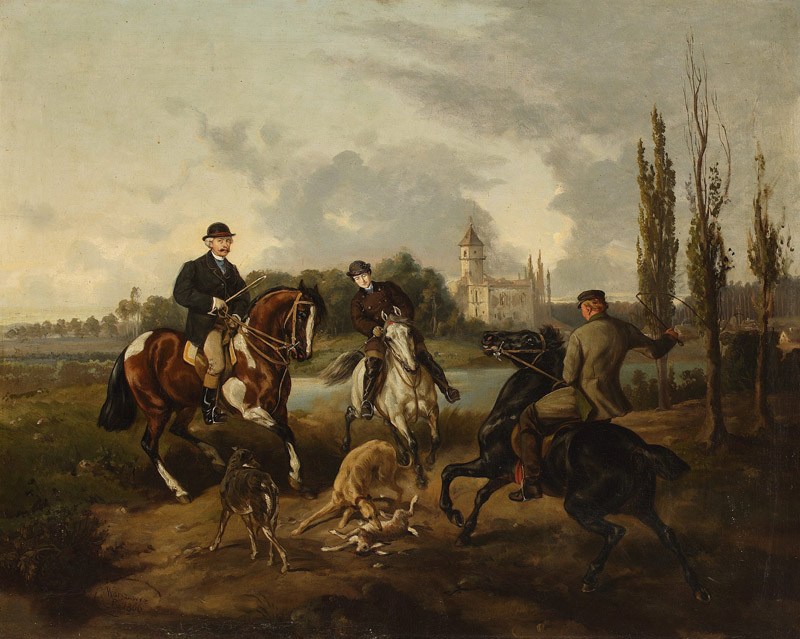He took part in international exhibitions in Paris (1867 and 1890, among others), Dresden (1868), Vienna (1873, 1888, 1893), and Berlin (1891). His pre-eminent position on the national art scene was attested to by, among others, his retrospective exhibitions organised in 1899 in Lviv, Kraków, and Warsaw, in 1924 – in Warsaw and Kraków, in 1925 – in Lviv, while in 1933 – in Warsaw and Lviv.
 Title page of Song of the Polish Legions with an illustration by Juliusz Kossak, 1900, photo source: CBN Polona / www.polona.pl
Title page of Song of the Polish Legions with an illustration by Juliusz Kossak, 1900, photo source: CBN Polona / www.polona.plBeing in fact self-taught, he developed a style based on the observation of nature and the conventions of depiction employed by European masters, which became the starting point and the reference for many native painters, predominantly watercolourists. Kossak's artful finesse, perfect drawing skills, and an adept command of the difficult watercolour technique made him an exceptional artist. It was most of all his choice of subjects that earned him his place among the coryphaei of Polish culture. The artist created sentimental and realistic representations of typical rural motifs, faithfully depicting the Polish landscape, documented the specifics of the habits of Polish nobility, commemorated hunting occasions and horse rides of the Galician landed gentry, authored a vast collection of equestrian portraits of Polish nobles, and, last but not least, recorded heroic moments in Polish history for future generations by painting grand battles led by Polish leaders. At the time of the national captivity, a rich narrative permeates these scenes – exposing the Polish nature, but lacking dramatism or martyrological accents – served the preservation of Polishness.
 Juliusz Kossak, Krzysztof Gniewosz Defending the Polish Banner at Chocim, 1892, photo source: CC / Wikimedia Commons
Juliusz Kossak, Krzysztof Gniewosz Defending the Polish Banner at Chocim, 1892, photo source: CC / Wikimedia CommonsWhile creating this specific, selective portrayal of Poles, Kossak sought inspiration in national literature, especially the works by Wincenty Pol (Szymon Mohort Presenting the Stud Farm to Prince Józef Poniatowski, 1858). The horse remained the central motif in the artist's imagery across all the stages and themes of his practice; the perfectly drawn and modelled horse silhouette – caught in motion or ‘posing’ for a portrait – became the synonym of Polishness in Kossak's art. Stylistically, the hunting and race scenes were influenced by the English prints devoted to this subject, which were very popular in continental Europe.
Kossak's exposure to the art of Rubens and Géricault while he was in Paris inspired him to add grandeur and complexity to his compositions, and present the horse silhouettes in increasingly intricate forerhortenings (Fair near Warsaw, 1866). Kossak's excellent knowledge of a horse's anatomy was also a result of his studies carried out in Parisian riding halls, drill grounds, and abattoirs.
 Hunting scene in Radziejowice; 1866; oil; canvas; 63 x 78 cm, photo: Ligier Piotr/National Museum in Warsaw
Hunting scene in Radziejowice; 1866; oil; canvas; 63 x 78 cm, photo: Ligier Piotr/National Museum in WarsawThe suggestively represented dynamics of the horses' movement could be found in the hunting scenes (Par Force Hunting with Hounds, 1868; Wolf Hunting on the Steppe, 1883) and historical compositions, perfectly reflecting the battlefield tumult (Battle of Párkány, 1883; Sobieski at Vienna, Battle of Ostrołęka). His hitory paintings also included the glorifying portraits of national heroes, Tadeusz Kościuszko, Józef Poniatowski, and Erazm Sanguszko, portrayed in front of armies and military scenes (Portrait of Prince Jozef on Horseback, 1879).
The artist reached the peak of his skills in the first half of the 1870s. The late phase of his practice was characterised by a progressing schematic inclination in the repeating representations of hunting scenes, as well as weddings and stud farms.
Kossak was also known as an author of satirical cartoons and caricatures, and a designer of medals, set designs, and posters.